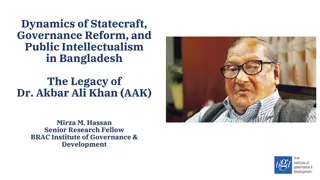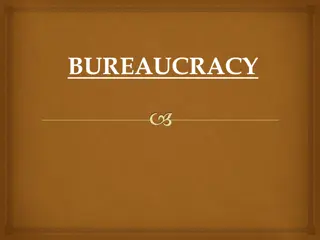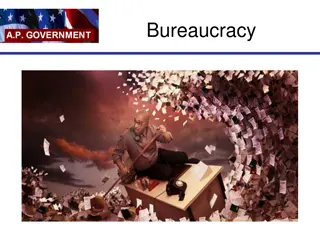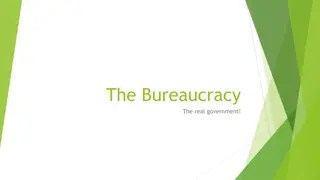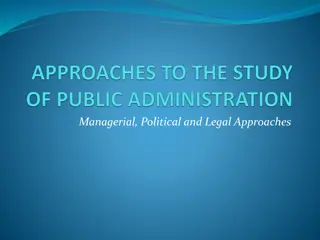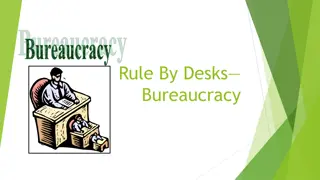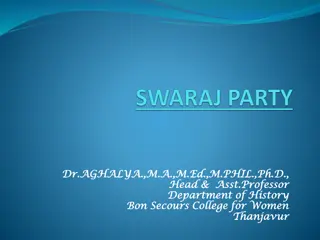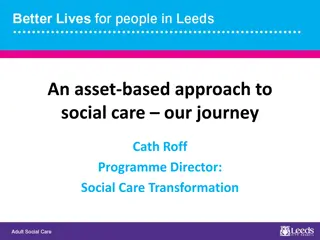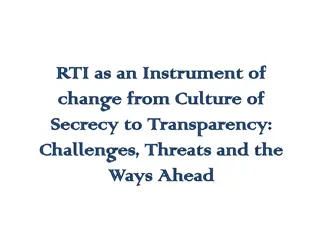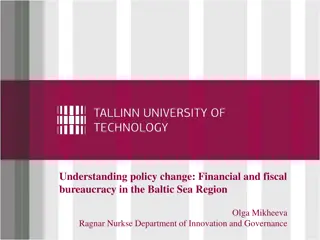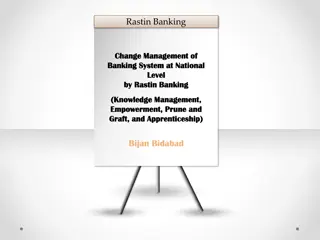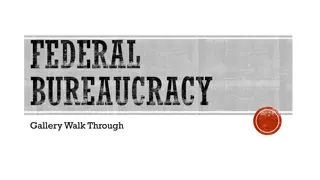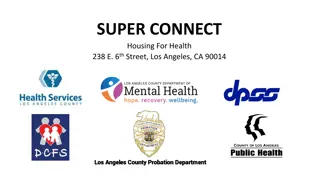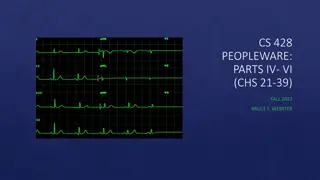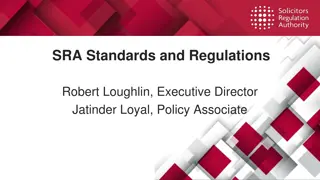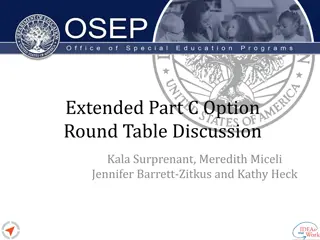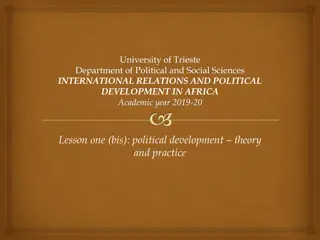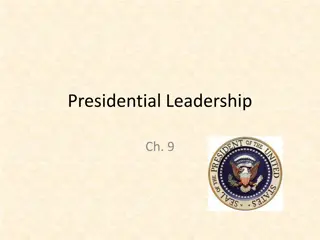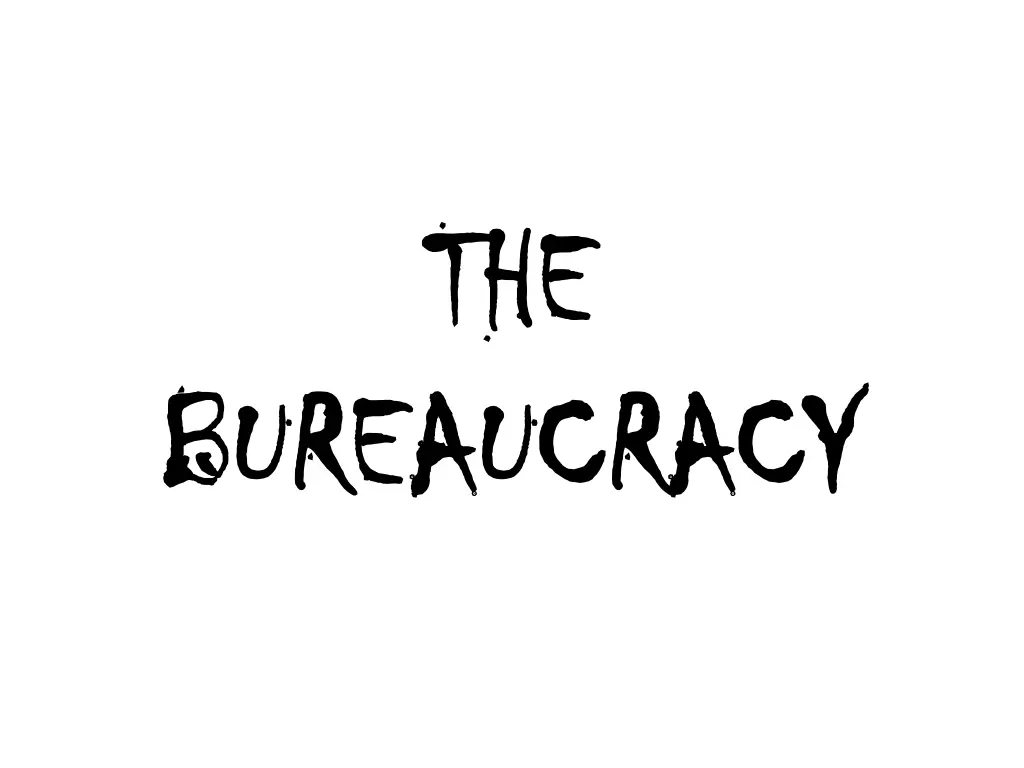
Understanding the U.S. Bureaucracy and Government Agencies
Explore the structure of the U.S. bureaucracy, including regulatory agencies, executive departments, and government corporations. Learn how these agencies are created, the types of agencies, examples of each, and their roles in governing the economy. Discover the independence of regulatory agencies and the services provided by government corporations compared to private companies.
Download Presentation

Please find below an Image/Link to download the presentation.
The content on the website is provided AS IS for your information and personal use only. It may not be sold, licensed, or shared on other websites without obtaining consent from the author. If you encounter any issues during the download, it is possible that the publisher has removed the file from their server.
You are allowed to download the files provided on this website for personal or commercial use, subject to the condition that they are used lawfully. All files are the property of their respective owners.
The content on the website is provided AS IS for your information and personal use only. It may not be sold, licensed, or shared on other websites without obtaining consent from the author.
E N D
Presentation Transcript
THE THE BUREAUCRACY BUREAUCRACY
All of the bureaucratic agencies are created by Congress and funded by Congress.
Types of Agencies Executive Departments- created to help the Pres. develop & carry out policy
Examples Dept. of Defense Dept. of Commerce State Dept. Dept. of Education
Each agency is headed by a Pres. Appointee that is a member of his cabinet. The vast majority of employees in these agencies are full time civil servants
Regulatory Agencies created to regulate a sector of the economy. They are to make & enforce rules to protect the public interest such as the Securities & Exchange Commission making sure that no one cheats in selling or buying stocks Martha Stewart.
Examples Federal Reserve Board, Security & Exchange Commission, Federal Communications Commission
These Regulatory Agencies are governed by a commission of 5-10 members that are appointed by the President & approved by the Senate.
The members are more independent than other agencies. They can not be fired for political reasons like members of the Cabinet. This allows these agencies to make rules without too much political interference.
Government Corporations provide a service that could be provided by a private company. The Gov t Corp. can provide the service at a cheaper price. Ex-Post Office
Like the Ex. Depts., the heads of the Gov t Corps are appointed by the Pres & approved by the Senate.
Independent Agencies are none of the above meaning that they are agencies that fit in none of the other catagories. EX-NASA
CIVIL SERVICE Most of the employees in the federal bureaucracy are full time employees they don t lose their jobs when we elect a new president.
Originally, you became a civil servant through patronage. After the Garfield assassination, Congress passed the Pendleton Act, which made the Civil Service merit based.
IRON TRIANGLES This term refers to the relationship between Interest Groups, Congress & Executive Agencies
House Ag. Committee Cotton Farmers Association Department of Agriculture
House Ag. Committee can provide: policy info support casework access to the Cotton Farmers Assoc. House Ag. Committee Cotton Farmers Assoc can provide: info election endorsement election contributions to the members of the House Ag. Committee Cotton Farmers Association
House Ag. Committee The Dept. of Ag can provide: information help with casework The Ag. Committee can provide: money- budget info support Dept. of Ag.
Dept. of Ag. Cotton Farmers Assoc The Dept. of Ag. can provide: information, rules on cotton production, deliver services subsidies, loan programs The Cotton Farmers Assoc can provide: information, support for the Dept. with Congress
ISSUE NETWORKS Issue Networks are more complex iron triangles with more players .
ISSUE NETWORKS Congressional committees: Agriculture, Appropriations, Environment & Interest Groups: -Cotton Farmers -Environmentalists -Foreign textile groups Public Works Environmental Protection Agency Dept. of Ag. The Media Educational experts


